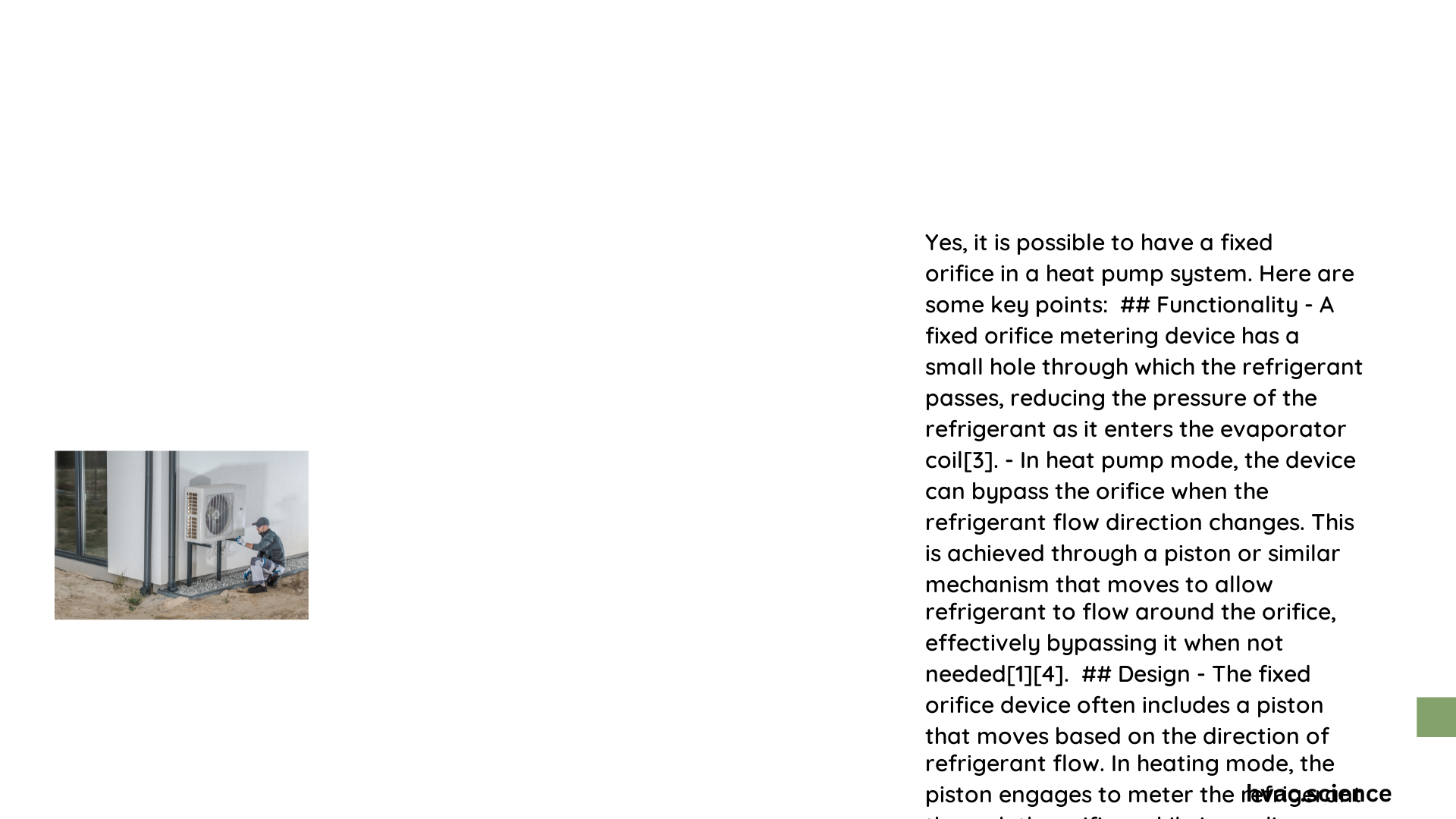Heat pump systems can indeed utilize fixed orifice metering devices, presenting a technically viable solution for refrigerant flow control. These precision-engineered components offer specific advantages and limitations in thermal transfer systems, requiring careful selection, sizing, and installation to ensure optimal performance across various operational conditions.
What Are Fixed Orifice Metering Devices in Heat Pump Systems?
Fixed orifice metering devices represent a critical component in heat pump refrigeration cycles, responsible for regulating refrigerant flow between high and low-pressure zones. Unlike thermostatic expansion valves (TXVs), these devices maintain a constant opening size, which directly impacts system efficiency and performance.
How Do Fixed Orifice Devices Function?
Fixed orifice devices operate through precise mechanical principles:
- Mechanical Restriction: Creates a consistent pressure drop
- Refrigerant Flow Control: Manages liquid-to-vapor transition
- Size-Specific Performance: Determined by internal bore diameter
| Orifice Characteristic | Technical Specification |
|---|---|
| Typical Bore Diameter | 0.055 – 0.085 inches |
| Material Composition | Brass, Stainless Steel |
| Installation Direction | Unidirectional Flow |
What Determines Fixed Orifice Compatibility?

Several critical factors influence the successful implementation of fixed orifice devices in heat pump systems:
- System Design Parameters
- Refrigerant type
- Compressor capacity
- Operating temperature range
-
Total equivalent piping length
-
Performance Considerations
- Consistent superheat maintenance
- Pressure drop characteristics
- Thermal efficiency requirements
Can Fixed Orifices Adapt to Varying Conditions?
While fixed orifices have inherent limitations compared to TXVs, strategic design and selection can mitigate potential performance variations:
- Precise Sizing: Match orifice dimensions to system specifications
- Material Selection: Choose corrosion-resistant components
- Regular Maintenance: Inspect for potential restrictions or wear
What Are the Installation Challenges?
Successful fixed orifice implementation requires:
- Accurate bore diameter selection
- Proper directional installation
- Compatibility with specific heat pump models
- Understanding manufacturer guidelines
Technical Recommendations for Optimal Performance
- Verify total equivalent piping length
- Confirm refrigerant compatibility
- Assess environmental operating conditions
- Implement periodic system diagnostics
What Performance Metrics Should Be Monitored?
Key performance indicators include:
- Coefficient of Performance (COP)
- Superheat and subcooling temperatures
- Pressure differential across the metering device
- Energy consumption patterns
Potential Limitations to Consider
- Less adaptive than TXVs
- Potential efficiency variations
- Sensitivity to environmental changes
- Maintenance requirements
Conclusion
Fixed orifice devices remain a viable metering solution in heat pump systems when carefully selected, precisely installed, and regularly maintained. Understanding their operational characteristics enables engineers and technicians to optimize system performance effectively.
Reference:
– ASHRAE Technical Resources
– HVAC Technical Guidelines
– Refrigeration Engineering Standards
